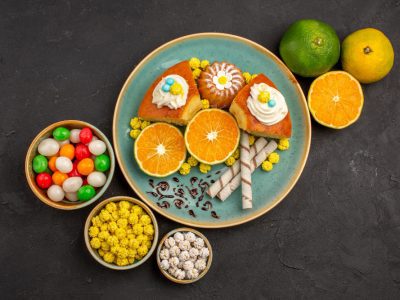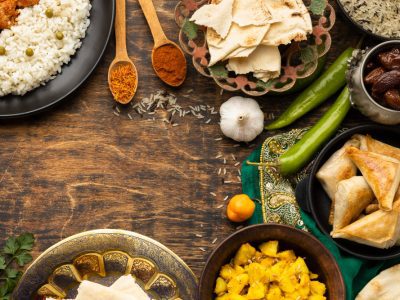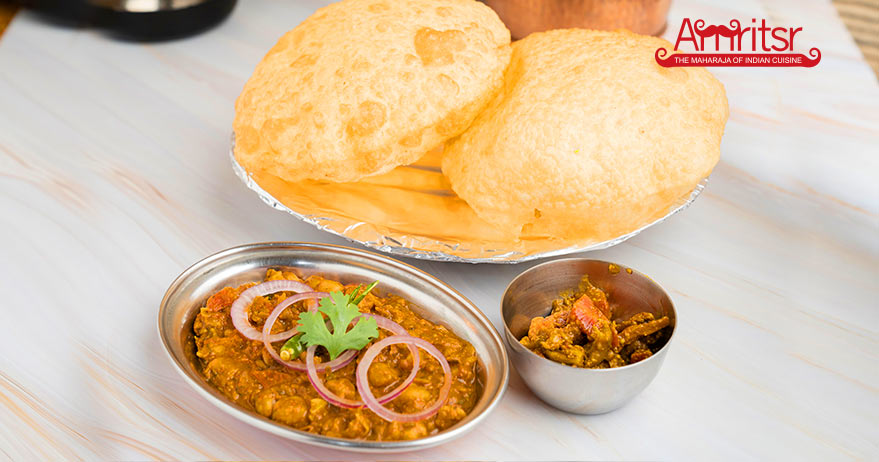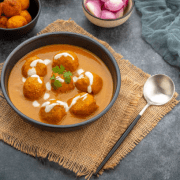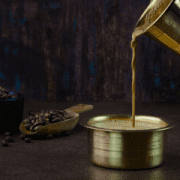When Persian and Indian cooking styles and ingredients were mixed, a new culinary heritage called Parsi cuisine was born. Originally hailing from Persia (modern-day Iran), the Parsi community fled religious persecution and settled on the Indian subcontinent in the 8th century. They settled mostly in western India, especially in the states of Maharashtra and Gujarat, and they adopted local customs while maintaining their own religious and cultural practices.
As a result of this migration, regional Indian cuisines and Persian culinary traditions were increasingly blended. Traditional Persian cuisines, marked by the use of dried fruits, nuts, and aromatic herbs, were adapted to include indigenous Indian spices, vegetables, and cooking methods. As it has developed through the years, Parsi food has absorbed elements from several Indian cuisines, including those of the British, the Gujaratis, and the Maharashtrians. A cuisine that is unique and deeply rooted in the Indian culinary tradition has emerged from this diverse tapestry of influences.
The Influence of Parsi Cuisine on Modern Indian Food
Modern Indian gastronomy has been greatly influenced by Parsi cuisine, which has introduced distinctive flavours, dishes, and cooking techniques. Its impact may be seen in many parts of modern Indian cuisine, from traditional recipes to fusion cuisine.
Parsi Food Dishes
A number of beloved Parsi recipes have made way into contemporary Indian cuisine, bridging the gap between the two communities:
- Dhansak: Mutton, lentils, and vegetables are the main ingredients in Dhansak, a traditional Parsi cuisine that is seasoned with a special blend of spices. The classic accompaniment to this substantial stew is brown rice that has been caramelized. The dish is a perfect example of how Indian ingredients and Persian cooking techniques can come together to create a deliciously balanced meal. Its renown has spread beyond the Parsi community and into mainstream Indian households and restaurants.
- Patra ni Machhi:Wrapped in banana leaves and cooked to perfection, this speciality contains fish coated with a chutney of cilantro and coconut. Incorporating coconut and spices shows Indian influence, while boiling fish in leaves is a technique that echoes old Persian cooking methods. Seafood lovers all throughout India have adopted Patra ni Machhi, a dish that is traditional at Parsi festivals.
- Sali Boti:Curry with succulent meat cooked in a tomato-based sauce and topped with crispy fried potato straws (sali) is a delicious dish. This recipe exemplifies the Parsi tendency to blend sweet and sour flavours, which is characteristic of Persian food, with the Indian fondness for thick, spicy gravies. Many Indian restaurants now offer Sali Boti, a dish beloved for its velvety texture and flavour.
Fusion Food Trends
Indian fusion cuisine has its roots in the Parsi culinary tradition, which reflects the community’s long history of adaptation and assimilation:
- British Influence: The Parsis, who were in many cases the go-betweens for the British and the locals during the colonial era, took inspiration from British cooking techniques and ingredients. As a result, recipes like “Lagan nu Custard” emerged, a baked custard dessert with Indian spices and dried fruits that is similar to bread pudding from the United Kingdom. By fusing Western techniques with Indian flavours, these innovations have enhanced Indian dessert offerings.
- Regional Indian Cuisines: After settling in the Indian states of Gujarat and Maharashtra, Parsis began blending their cuisine with that of the locals. For example, unlike the conventional vegetarian Gujarati version, the Parsi version of ‘Kadhi,’ a dish made with yoghurt, adds eggs or meat. The variety of Indian food is enriched by these regional modifications, which provide new takes on old favourites.
- Contemporary Fusion: Fusion meals that combine traditional Parsi flavours with international culinary trends are still inspired by Parsi cuisine today. The chefs showcase the variety of Parsi cuisine by experimenting with Parsi spices and techniques to create dishes like ‘Sali Chicken Tacos’ or ‘Dhansak Risotto,’ exposing Parsi flavours to a broader audience.
Conclusion
The ability of the Parsi community to maintain its rich culinary history while welcoming and incorporating other cultural influences is demonstrated by the impact of Parsi cuisine on contemporary Indian cuisine. The culinary scene in India has been enhanced by this combination, which has produced a distinct culinary tradition.
Many dishes that were originally from Parsi cuisine are now staples in Indian cuisine due to the unique blend of Persian flavours and Indian spices. The community’s willingness to mix and match flavours from other cultures has resulted in creative fusion recipes that are always changing.
The heritage of Parsi culinary traditions is a constant reminder of the inclusive and ever-changing nature of food culture, especially as contemporary Indian cuisine evolves. The importance of the Parsi minority on India’s culinary identity is seen in the continued popularity of dishes inspired by their cuisine.
A food enthusiast and a blogger – someone who likes to eat and write about it. I’m passionate about exploring different cuisines and challenging my palette. I give into my food craving regularly and am often on the hunt to find my new favorite food place in town.


